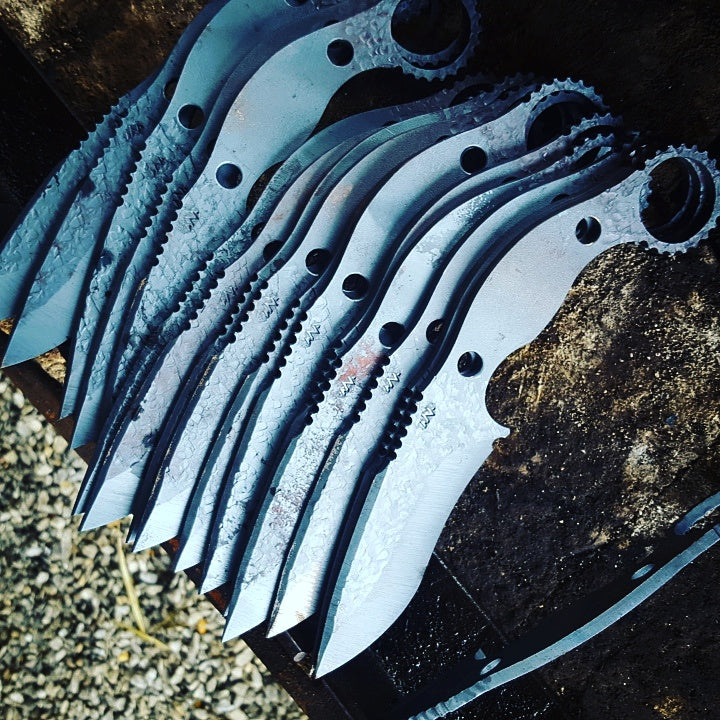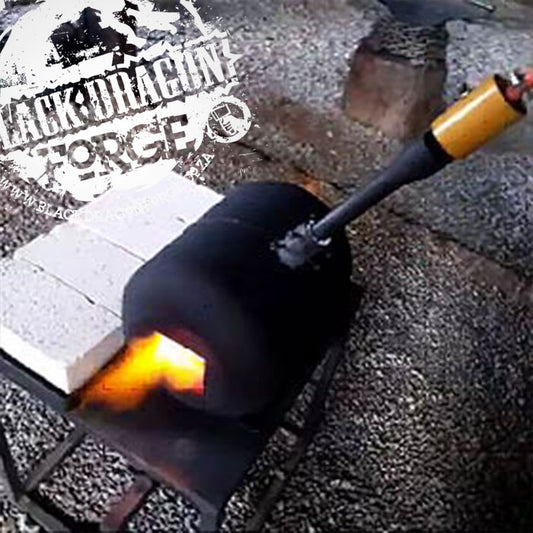
Removing Firescale from Steel: A Battle Plan with Hydrochloric Acid
Neels Van Den Berg
When it comes to forging steel, achieving a flawless finish is crucial. Firescale, a stubborn layer of oxides that forms on the metal's surface during the forging process, can be a persistent adversary. However, fear not, for we have a powerful weapon in our arsenal – hydrochloric acid (also known as muriatic acid). In this battle plan, we will guide you through the process of removing Firescale using hydrochloric acid, ensuring your steel emerges clean and ready for the next phase of your creation.
Gathering the Materials
Before we embark on our mission, let's gather the necessary materials to ensure a successful campaign:
- Hydrochloric Acid (Muriatic Acid)
- Perforated container
- Large bucket
- Bicarbonate of Soda
- Water
- Rubber gloves
- Eye protection
- Nail brush
Preparing the Battlefield
Ensure you have a safe and controlled environment for the battle. Set up a designated area, preferably outdoors, to handle the hydrochloric acid. Remember that the fumes can be corrosive to nearby machinery, so take precautions accordingly. Additionally, keep the acid out of reach of children and pets.
Submerging the Blade
Take your black, fire-scaled blade and submerge it into a bucket of undiluted hydrochloric acid. The blade should be placed in a perforated container to avoid direct contact with the acid. Slowly lower the container into the larger bucket to avoid splashing. Remember, safety first – wear your rubber gloves and eye protection throughout the process.
Timing the Battle
The battle against Firescale is a timed affair. Two hours in the acid bath should be sufficient to pickle the scale off the blade. Patience is key as the hydrochloric acid works its magic.
Neutralizing the Acid
Once the battle timer has elapsed, it's time to neutralize the acid. Submerge the blade in a strong solution of Bicarbonate of Soda and water. This step ensures that any remaining traces of the acid are neutralized and rendered harmless.
The Cleansing Ritual
With the acid now neutralized, it's time for the cleansing ritual. Rinse the blade under running water to remove any residual substances. For those stubborn spots, enlist the aid of a trusty nail brush to scrub them away.
Inspecting the Spoils of Victory
Now that the battle has been won, inspect your steel's appearance. It should gleam with a clean grey hue, free from the clutches of Firescale.
Safety Measures
Throughout this battle, we cannot emphasize enough the importance of safety. Working with hydrochloric acid requires caution and respect. Should any acid come in contact with your skin, rinse immediately with water. Remember to store the acid bucket outdoors to prevent fumes from corroding workshop machinery.
The Perishable Nature of Buckets
Keep in mind that the bucket used to hold the acid may perish and become brittle if left outside for extended periods. Ensure proper storage and maintenance to prolong its life.
Conclusion
With the battle plan executed successfully, you have proven your mettle in removing Firescale from steel using hydrochloric acid. Your creations will now boast a pristine appearance, ready to take on new challenges. However, remember to continue practicing safety measures and exercise caution when handling acids.
FAQs
Q1: Is hydrochloric acid dangerous to work with?Hydrochloric acid is a corrosive substance and requires careful handling. Wearing rubber gloves and eye protection is essential to minimize the risk of accidents.
Q2: Can I reuse the hydrochloric acid?
While the acid can be used multiple times, its strength diminishes with each use. For optimal results, consider replenishing with fresh acid when necessary.
Q3: How long should I pickle the steel in the acid?
Two hours is generally sufficient, but the time may vary depending on the severity of the Firescale. Keep a close eye on the progress during the pickling process.
Q4: Can I use other acids for this process?
Hydrochloric acid is commonly used for pickling steel due to its effectiveness. While other acids may work, their results may differ.
Q5: What precautions should I take during neutralization?
When neutralizing the acid, ensure you handle Bicarbonate of Soda with care. Avoid inhaling the powder and mix it with water in a well-ventilated area.








